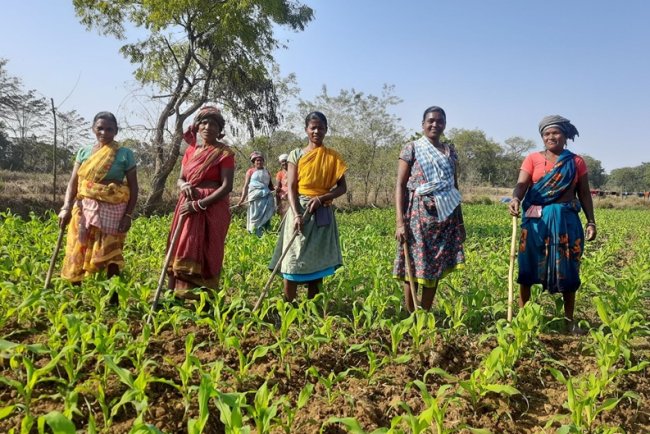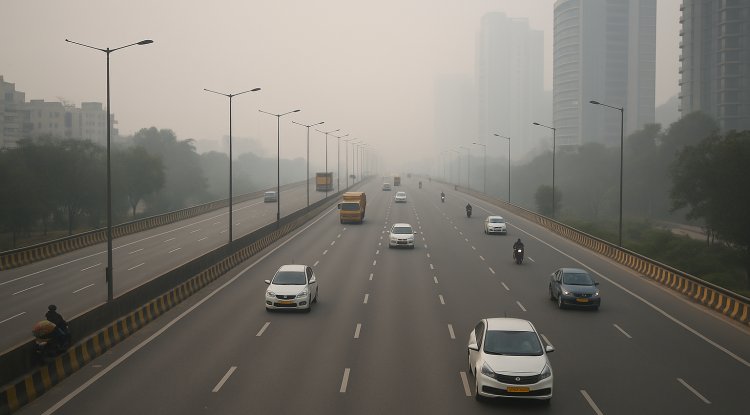Building Climate Resilience From The Ground Up: How Philanthropy Helps The Frontlines
Farmers like Mamata and Dasha show that with support and knowledge, climate action starts at the soil and grows into grassroots leadership, writes the author

Climate change begins with people and their resilience. With strategic philanthropy and grassroots ambition, transformation becomes inevitable. In the fields of Odisha and the forests of Jharkhand, we see it not as theory, but as lived experience—etched into the journeys of farmers like Mamata Nayak and Dasha Topno, who are not just surviving climate change—they are leading the charge against it.
Climate Change Starts at the Soil—and So Does the Solution
Small farmers across the country have faced mounting pressures due to the erratic rains, soil degradation, pest outbreaks and shrinking water tables. These are no longer hypothetical risk but unfortunately daily realities.
Initiatives like the Sambhav Project believe that we can’t safeguard livelihoods just by equipping local farmers with the tools of climate change but also by educating them through practical learnings of climate change and regenerative agriculture. Through this, they not only regenerate ecosystems but also rewire local economies.
Mamata Nayak: From Rain-fed Farming to Year-round Abundance
In Mandaguda village, nestled in Odisha’s Koraput district, Mamata Nayak and her family depended on 3 acres of rain-fed farmland to survive. With no irrigation and little access to modern practices, cultivation was seasonal, uncertain, and unsustainable. But Mamata’s story didn’t end in struggle—it began in transformation.
With the intervention of Pragati under the SAMBHAV Project, Mamata joined a youth producer group and received support for a dug well and solar pump—a solution that turned seasonal scarcity into year-round opportunity. Irrigation unlocked the winter crop season for the first time in her life.
But the real shift came through knowledge. Mamata immersed herself in training on:
• System of Rice Intensification (SRI) using indigenous, climate-resilient paddy varieties like Kalajeera, Lal Balsa, and Basanti Chudi.
• Organic pest management with bio-inputs.
• Post-harvest handling and market linkages through the Maa Nishanimunda Farmer Producer Company.
Today, on that same 3-acre plot, Mamta cultivates- tomatoes, onions, gourds, watermelon, and cucumbers— to ensure income across seasons and reduction in climate risk through diversification.
Dasha Topno: Harnessing Forest Economies through Lac Cultivation
In Banabira Beritoli village, Jharkhand, Dasha Topno struggled to make ends meet from conventional agriculture. But a lac cultivation training by TRDSW changed his trajectory. Starting with just two ber trees in 2022, his first harvest brought in ₹20,000—enough to show him the path forward.
With further technical training at IINRG, Dasha scaled his operations:
• Rented 20 ber trees
• Adopted treated seed lac, pesticide spraying via gator machine, and advanced harvesting tools
• Harvested 210 kg of lac, generating ₹2,00,000 in revenue and a net profit of ₹80,000
This wasn’t just personal gain. His wife, Sushma Topno, also joined the movement—adopting Zero Budget Natural Farming (ZBNF) and Climate Smart Agriculture Practices (CSAP) through her SHG. Together, they’re building a micro-ecosystem of circular farming—from vermicompost to mixed cropping—right from their backyard.
The Philanthropic Imperative
These aren’t just ‘feel-good’ stories, they are the proof that the convergency of philanthropic capital and community-led action can build resilience.
As climate change accelerates, we must inculcate the impact that farmers hold. They are the guardians of biodiversity, soil and at the frontlines of being impacted due to climate change.
If we are serious about achieving climate resilience in agriculture, our strategies must begin with those who till the soil. Philanthropy must not only fund projects—it must amplify potential, remove systemic barriers, and build platforms for scale. Mamata and Dasha show us what’s possible when this vision takes root.
Let’s not call them beneficiaries. Let’s call them what they truly are—leaders of change.
What's Your Reaction?

















